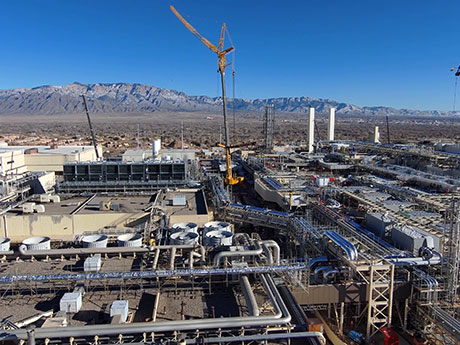ARIZONA, NEW MEXICO, OHIO AND OREGON — Intel Corp. and the U.S. Department of Commerce have signed a non-binding preliminary memorandum of terms (PMT) for up to $8.5 billion in direct funding to Intel for commercial semiconductor projects under the CHIPS and Science Act.
The proposed funding would help advance Intel’s critical semiconductor manufacturing and research-and-development (R&D) projects at its sites in Arizona, New Mexico, Ohio and Oregon.
CHIPS Act funding aims to increase U.S. semiconductor manufacturing and research and development (R&D) capabilities. According to a release, Intel is the only American company that both designs and manufactures leading-edge logic chips.
“Today is a defining moment for the U.S. and Intel as we work to power the next great chapter of American semiconductor innovation,” says Intel CEO Pat Gelsinger. “Artificial intelligence is supercharging the digital revolution, and everything digital needs semiconductors.”
Santa Clara, Calif.-based Intel is building two new fabrication plants in Chandler, Ariz. The new factories on the company’s Ocotillo campus are part of Intel’s multibillion-dollar global manufacturing build-out, which includes new or expanded facilities in Oregon, New Mexico, Ohio, Malaysia, Ireland, Poland, Israel and Germany.
Construction is underway on Intel’s Fab 9 factory in Rio Rancho, N.M. Fab 9 is part of Intel’s previously announced $3.5 billion investment to equip its New Mexico operations for the manufacturing of advanced semiconductor packaging technologies.
Intel is expanding its D1X factory in Hillsboro, Ore., with “Mod3,” which will provide Intel engineers with an additional 270,000 square feet of clean-room space to develop next-generation silicon process technologies.
In Licking County, Ohio, construction is underway on Intel’s Ohio One campus, which spans nearly 1,000 acres. In January 2022, Intel announced plans to invest more than $20 billion in the construction of two new chip factories in Ohio. The company broke ground in September 2022.
Together, the CHIPS Act proposed funding and Intel’s previously announced plans to invest more than $100 billion in the U.S. over five years constitute one of the largest public-private investments ever made in the U.S. semiconductor industry. The investment will create thousands of new company positions and construction jobs while strengthening U.S. supply chains, according to Intel.
Under the PMT, Intel would also have the option to draw upon federal loans of up to $11 billion. Additionally, Intel plans to claim the U.S. Treasury Department’s Investment Tax Credit, which is expected to be up to 25 percent of qualified investments of more than $100 billion over five years. The PMT provides that the direct funding and federal loans are subject to due diligence, are conditional on the achievement of certain milestones and remain subject to availability of funds.
Intel currently employs nearly 55,000 people in the U.S., indirectly supports over 720,000 American jobs and contributes more than $102 billion annually to U.S. GDP. With the CHIPS Act funding, Intel’s planned U.S. investments are expected to create more than 10,000 new permanent jobs at Intel and nearly 20,000 construction jobs, and they will indirectly support more than 50,000 jobs with suppliers and supporting industries.
Intel is also driving partnerships with government and academia to boost the availability of skilled semiconductor talent. Intel announced a $100 million investment in 2022 to expand semiconductor education, research and workforce training opportunities across the nation.
Intel currently uses 100 percent renewable electricity in fabrications and other operations in the U.S., and plans to achieve 100 percent renewable electricity worldwide by 2030.
The company’s stock price opened at $42.99 per share Wednesday, March 20, up from $29.16 per share one year ago.
— Kristin Harlow


